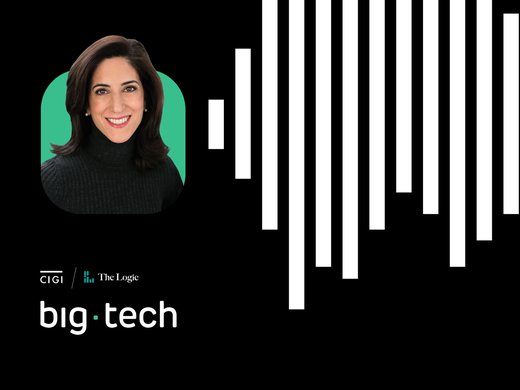Last semester, I taught a global internet policy class. Sometimes, I wondered if a better name for the course would have been GAFA policy class — that is, Google, Apple, Facebook and Amazon. Even when we did not set out to focus on the big American technology players, we often found ourselves talking about them anyway.
This happens outside of the classroom too; policy conversations around platform governance tend to zoom in on the major companies of the day. But I would argue that fruitful regulatory policy considers how to regulate an industry, not just specific companies, by looking at the problem both horizontally and vertically.
First, the horizontal approach: comparing platforms to other industries. Can we draw useful analogies that could inform policy, or are their similarities superficial? Comparing can also help us to think through the unintended consequences of policy based on flawed analogies and to recognize where regulation has or has not worked as policy makers had hoped.
Second, we need to look at the problem vertically. We often fixate on the biggest players, and for good reason — Apple’s market capitalization alone is higher than Germany’s top 30 companies in the DAX Index. But, there is a danger that we might lock in the major companies’ dominance by creating regulation that only they can afford to follow. Policy decisions would benefit from also considering smaller companies and platforms, such as Mumsnet, a platform for discussing parenting in the United Kingdom, or Seznam, a Google equivalent in Czechia.
Horizontal Thinking
Human beings often think using analogy; analogies can be powerful tools for analysis. But analogic thinking has its perils as well; it can draw simplistic comparisons between two industries or events that do not meaningfully resemble each other. As Harvard intellectual historian Peter Gordon has noted (regarding analogies between fascism and our present moment): “Our interpretations are always in flux, and the question of whether a given analogy is suitable can only be answered by making the analogy to see if it casts any light, however partial it may be.”
With that in mind, let’s consider two sectors that often appear in analogies used to describe and understand platforms: big polluters and global finance.
How Digital Platforms Are (or Are Not) Like the Major Polluters
We often talk about the “online environment.” This metaphorical language makes it seem like the online space looks similar to our offline world. For example, the term “information pollution,” coined by Claire Wardle, is increasingly being used to discuss disinformation online.
Others have suggested that the analogy between social media companies and big polluters provides a helpful history lesson in why regulation emerges. Journalist Julia Angwin has talked about how American rivers that burned because of polluted substances in the 1960s inspired the creation of the Environmental Protection Agency. Major companies like Dow Chemical were made to pay for the negative externalities of their products, such as chemical waste.
At first, this analogy to big polluters can seem comforting — there was a solution. There were environmental problems (burning rivers) that regulators did not address. An agency was created to address them and rivers no longer burned. There were even greater successes, such as the Montreal Protocol in the mid-1990s to ban chlorofluorocarbons which were causing a hole in the ozone layer. The Protocol worked and the hole in the ozone layer has been shrinking ever since. But (and it’s a big but!) human-induced climate change continued, and major companies kept on polluting.
How should we approach the regulation of #bigtech? @HeidiTworek suggests the "horizontal/vertical" exercise 🔊 pic.twitter.com/hSb1lMGFnY
— CIGI (@CIGIonline) February 24, 2020
There were problems inherent in environmental crime from the start that can be instructive. Let’s take the first major example of green-collar crime in North America. In 1970, the Great Lakes were found to have extremely high levels of mercury. Canada and the United States reacted with a range of measures such as fishing bans and extensive scientific monitoring. Environmental historian Simone M. Müller has traced how the American and the Canadian governments brought cases against Dow Chemical, whose plant in Ontario was contaminating the lakes with mercury.
The Great Lakes crisis fundamentally altered the environmental regulatory landscape in North America. The United States passed the Clean Water Act in 1972, while Canada created its Department of the Environment in 1971 and passed the Fisheries Act in 1972. The two countries also cooperated, signing a Great Lakes Water Quality Agreement in 1972.
This analogy between environmental regulations and technology governance is both inspiring and deflating. On the one hand, the Great Lakes example shows how regulators and prosecutors can evolve to combat new kinds of issues. Green-collar crime prosecutions increased throughout the 1980s. Three years after the Deepwater Horizon oil platform explosion in 2010, BP (the rebranded British Petroleum Company) pleaded guilty to 14 crimes and was fined a record US$4 billion. It is possible to both recognize new kinds of crimes and hold companies responsible for negative externalities.
"Policy conversations around platform governance tend to zoom in on the major companies of the day. But I would argue that fruitful regulatory policy considers how to regulate an industry, not just specific companies."
On the other hand, proving direct consequence in environmental disaster is an uphill battle. Companies fight to conceal their knowledge of climate change or their own culpability. Companies such as Exxon and Shell privately discussed the damage caused by fossil fuels back in the 1980s. They did not publicly disclose these findings, which were only leaked or released over 30 years later. It is even harder to prove direct connections between online platforms and offline harms. This is partly because platforms are not transparent. It is also partly because the cause-and-effect relationship is much murkier with arenas like speech. Transparency to enable third-party research on platforms will be one method to avoid some of the difficulties associated with prosecuting green-collar crime.
Finally, this analogy reminds us that both problems are dispiritingly hard to solve. Two scholars, Whitney Phillips and Ryan Milner, have suggested that our online information problems are ecosystemic, similar to the climate crisis.
Just as a few big companies contribute the majority of the world’s pollution, a few companies dominate the online environment. For Phillips, the analogy helps us to understand that individuals cannot solve the problems of the online environment alone: even well-meaning people who recycle still pollute by buying food, travelling or using electronics. By our very existence, we cannot escape damaging the environment. As Phillips argues, “we’re not going to solve the climate crisis if people just stop drinking water out of water bottles. But we need to start minimizing the amount of pollution that’s even put into the landscape. It’s a place to start; it’s not the place to end.”
Current environmental crises underline Phillips’s point: the Great Lakes are no longer filled with mercury, but an area the size of Switzerland went up in flames in Australia over the past few months.
As with the climate crisis, we will need action on multiple fronts to address problems online. Individuals — whether deciding to avoid single-use plastics or to opt-out of social media use — cannot fix the physicial or online environments alone. Rather, we need systemic change and improved regulation to overhaul companies’ behaviour.
How Digital Platforms Are (or Are Not) Like the Finance Industry
The second commonly used analogy for platforms is the finance industry, and it can seem discomfortingly apt. Banking and technology giants are both dominated by comparatively few major players who often do not act ethically. In both industries, fines do not seem to deter bad behaviour effectively. HSBC, for example, reached a settlement of US$1.9 billion with the United States government in 2012 over drug cartels laundering money through the bank’s Mexican branch. Despite many scandals and whistle-blowers, large-scale tax evasion still continues. And in the tech space, just last month Facebook disclosed that it paid US$550 million to settle a class-action lawsuit in Illinois over its use of facial recognition technology. Fines — or at least fines of this magnitude — seem similarly ineffective in creating industry-wide change.
As an industry, finance often creates national and international regulatory solutions. For example, CIGI’s Robert Fay — who has noted the likeness between big tech and big banks when it comes to global reach, monopolies and power — suggests the creation of a Digital Stability Board, inspired by a decades-old finance sector solution, the Financial Stability Board.
The Financial Stability Board took its current form after the 2008 financial crisis to better regulate and supervise international finance. It ensures that banking regulators (and other standard setters) coordinate and work to prevent another major crash. Thus far, it has worked. But it is worth noting that these types of solutions may entrench the status quo of major companies. Banking is a far older industry, with most major banks tracing their origins back to the late nineteenth or early twentieth centuries. In the creation of a Digital Stability Board, regulators could inadvertently cement GAFA as industry-shaping institutions for centuries to come. We must be clear-eyed about the risks of entrenching the current major technology players by sanctioning their ability to shape the global rules of the game.
In the United States, Rob Reich and David Siegel have proposed that social media companies create a self-regulatory agency like the Financial Industry Regulatory Authority (FINRA). FINRA is funded by dues from industry members who provide licences for financial advisers and other self-regulatory services. While independent from government, FINRA is government-sanctioned and, in the end, accountable to agencies such as the Federal Trade Commission. Reich and Siegel believe that FINRA could be “a valuable blueprint” because social media companies could create a regulatory agency that is more agile than government bureaucracy, while still generating regulation.
This suggestion has received support from people like Brian O’Kelley, who has helped build or co-founded a couple of major digital advertising platforms (Right Media and AppNexus, respectively). But the analogy gets complicated. In the United States, speech (including that shared on digital platforms) is protected by the First Amendment; there is no equivalent for financial advice. It may be legally unfeasible to license people who write sponsored content in the way that we license financial advisers. We may also not want the big social media companies such as Facebook to decide what makes someone a reputable creator of sponsored social media content. Given their issues with content moderation already, it is worth considering the downside of putting more power in private hands.
Law professors Jack Balkin and Jonathan Zittrain have drawn an analogy from the relationship between finance professionals (specifically, accountants) and their clients to develop the idea of treating platforms as information fiduciaries. Accountants — and other professionals such as doctors and lawyers — are obliged to act as information fiduciaries, meaning that they legally must protect their clients’ personal information and use it in their clients’ interests. Balkin and Zittrain argue that the platforms, giant or otherwise, should be classed as information fiduciaries as well, meaning that companies would be obliged to act in their users’ best interests and to protect their privacy.
The idea of information fiduciaries generated a lot of excitement. It also started to generate skepticism about whether the analogy really holds. Lina M. Khan and David E. Pozen worry that “analogical reasoning can retard rather than advance the cause of legal reform when it elides important institutional differences or normative considerations.”
There Is No Silver Bullet for Digital Platform Regulation
What, then, is the right analogy for digital platform regulation? Much of this turns on whether we believe that platforms are unprecedented in their control of an industry or not. Taken too far, the horizontal exercise — comparing technology giants to entirely different industries — can become overly simplistic and imply that we can just transfer from one industry to another. Are platforms really like finance or big polluters? As the Germans say, jein (a portmanteau of “ja” and “nein”). The key is figuring out what fits and what does not.
There may not be a one-size-fits-all analogy for platforms, but “horizontalizing” can help us to understand which solutions worked in other industries, which were under-ambitious and which had unintended consequences. Comparing horizontally also reminds us that the problems of how to regulate the online world are not unique, and will prove as difficult to resolve as those of other large industries.
Vertical Thinking
While we think about the horizontal, we cannot forget about the vertical. We are understandably focused on the giants in the field. Google is calling for regulation in artificial intelligence; Facebook has said that it wants to work with regulators. That is a U-turn in the rhetoric, compared to a few years ago. However, if we only think about regulation from the mega-companies’ perspective, we may create regulation cut only to fit them, which might stifle any chances of new companies emerging. Or we might snuff out small and medium enterprises that currently exist, by creating regulatory burdens that are too great for them to bear.
The key to vertical thinking is to figure out how not to lock in incumbents or to tilt the playing field even more toward them. We often forget that small rivals do exist, and our regulation should think about how to include them. This means fostering a market that has room for ponies and stable horses as well as unicorns.
In one of the last sessions for my class on global internet policy, I took my students through this horizontal/vertical exercise. After asking them to compare platforms to finance and big polluters, I asked them to consider how regulation might affect three smaller online companies: Mumsnet, Seznam and Reddit. Not one student had heard of all three, although each company serves millions of people. Such is the strange nature of scale online that when we say small, we mean a company like Seznam that has a 30 percent share of the market in Czechia, more than 15 million search queries daily and the most popular online Czech news website. Vertical thinking in platform governance means considering how any regulation might affect companies that most regulators (and my students) may never have considered.
Vertical thinking has started to spread in Washington, DC. In mid January, the antitrust subcommittee in Congress held a hearing with four smaller tech firms. All of them asked for regulatory intervention. The CEO of phone accessory maker PopSockets called Amazon’s behaviour “bullying with a smile.” Amazon purportedly ignored the selling of counterfeited PopSocket products on its platform and punished PopSocket for wanting to end its relationship with Amazon. Both Republicans and Democrats seemed sympathetic to smaller firms’ travails. The question is how to adequately address vertical concerns.
Without Improved Governance, Big Firms Will Weaponize Regulation
There are many aspects to vertical thinking. One is the question of intellectual property. Patents can protect innovation, but they can also be weaponized to wall off smaller competitors. Big companies can marshall an army of lawyers, which even medium-sized firms could never afford to do. Financial Times columnist Rana Faroohar has argued that American patent law has tilted in favour of big tech, which fundamentally undermines entrepreneurship.
A second aspect to consider is sliding scales of regulation. This idea is embedded in the FINRA suggestion. It could include differential payments or support with legal obligations. Legal compliance with major EU privacy legislation (the General Data Protection Regulation) is far costlier for smaller companies such as Seznam. Seznam’s popularity took a significant hit several years ago when Google seriously entered the Czech market. A well-intentioned new regulation could be highly detrimental to Seznam if it only aimed at addressing issues with Google or Google News, for example.
"We often forget that small rivals do exist, and our regulation should think about how to include them. This means fostering a market that has room for ponies and stable horses as well as unicorns."
A third aspect is burden of proof. One option is to flip the present default and make big companies prove that they are not engaging in harmful behaviour. Currently, the European Union (or a government) would have to demonstrate that a company’s behaviour harms consumers. In the American context, smaller companies would have to take larger ones to court. The EU head of antitrust, Margrethe Vestager, is considering whether to turn this on its head: in cases where the European Union suspects monopolistic behaviour, major digital platforms would have to prove that users benefit from their services. Companies would have to prove gains, rather than Brussels having to prove damages. This change would relieve pressure on smaller companies to show harms. It would put obligations on companies such as Google, which Vestager sees as so dominant that she has called them “de facto regulators” in their markets.
A final aspect to consider is possibly mandating larger firms to open up. European regulation has already started to think in this direction. Last year, the European Commission fined Google €4.3 billion for “illegal restrictions on Android smartphones” that made Google the default search engine. As of March 2020, Google’s Android devices will not only not make Google the default search engine but will also offer several other options. In some European markets, these alternatives will include smaller, more privacy-oriented search engines such as DuckDuckGo.
Vertical thinking means thinking about the unintended consequences for small and medium-sized firms. That can shift our expectations of regulations. Regulations should not just address big platforms — they must find ways to foster a level playing field of competition, which currently does not exist.
Platform governance is a complex problem. It makes sense that we pick specific examples from specific companies to start our conversations. But that point is not where our conversations should end. If we are not careful, our suggestions may create a world that we never intended: one where an old solution, full of its own faults, is transplanted to the technology sector simply because the blueprint was already drawn. If we take this approach to regulatory challenges we could find ourselves 20 years from now jousting with the same companies that we confront today. Thinking both horizontally and vertically is a first step in avoiding these types of unintended consequences.





